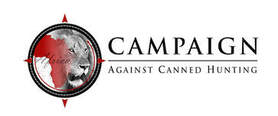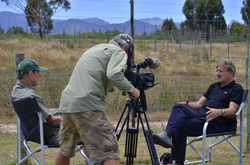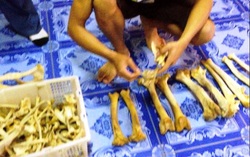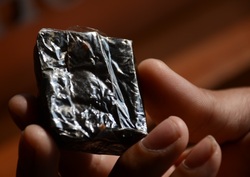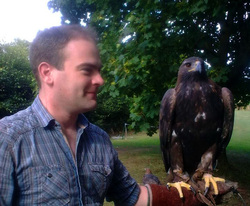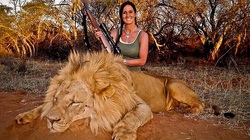
Melissa Bachman is a symbol of everything that is wrong in South African conservation.
Let’s forget the cruelty for a moment. Let’s also forget that the killer is a celebrity TV presenter. Let’s just focus on the consequences of her kill, and particularly on these two questions:
How does killing lions save them?
How does captive breeding of lions contribute to conservation?
Money! say the hunters, the lion farmers, the taxidermists, and the gun manufacturers.
Money! Money! Money! says the S.A. Government. It is Big money – but it does not go to real conservation, which is the preservation of natural functioning ecosystems. It goes in to more and more hunting farms.
So Melissa Bachman proves that conservation has been monetised. Like the shadow banking system that nearly brought the world’s financial system crashing down in 2008, wildlife has become securitised: sliced, diced and turned into AAA tranches for Asian Crime Syndicates.
We now have a shadow conservation system. In this new system, Africa is not a lady to be treated with love and respect. Africa has been turned into a whore who has to be raped.
Anyone who speaks out against the rape of African wildlife is labelled a racist, a radical, an extremist – even a terrorist.
Those who participate in the gang rape are labelled responsible, conservationists.
It gets worse.
Now there are degrees of rape, which are called sustainable use. Rapists are not supposed to gang rape Mother Africa to death. She must be left alive so that they can come back and gang rape her again next year.
Now we can place Melissa Bachman in a conservation context:
1. She kills a captive bred, tame lion. A cruel and pointless act that contributes nothing to lion preservation.
2. She pays large sums of money to enrich lion farmers, whose breeding activities have nothing at all with conservation.
3. On the contrary some lion farmers even procure poachers in Botswana to kill wild lions and capture cubs for use in their captive breeding farms.
4. The aggressive lobbying by the hunting industry is a distraction, moving the debate away from the real issues facing lion conservation. i.e loss of habitat and encroachment by rapidly expanding human populations.
5. The bones of the lion she shot will be sold to Asian wildlife traffickers, creating yet another threat to lion survival – a booming lion bone trade – and therefore increased wild lion poaching in Africa.
In short Melissa Bachman is directly contributing to the extinction of wild lion populations in Africa.
